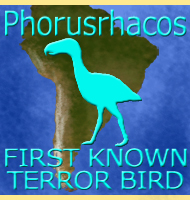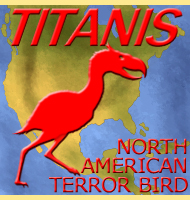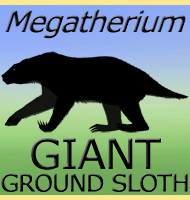


Kelenken
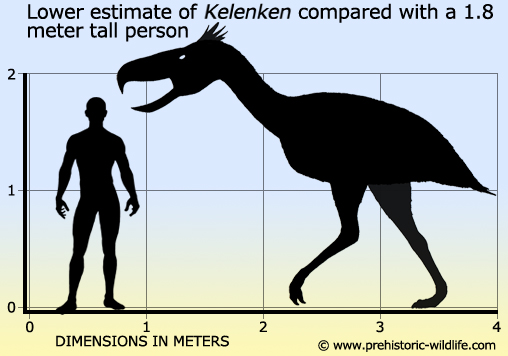
Name: Kelenken
(After a diety).
Phonetic: Kell-en-ken.
Named By: Bertelli et al. - 2007.
Classification: Chordata, Aves, Cariamae,
Phorusrhacidae, Phorusrhacinae.
Species: K. guillerm (type).
Diet: Carnivore.
Size: Between 2.28 and 3 meters tall.
Skull is 71 centimetres long (45.7 centimetres of which is
beak).
Known locations: Argentina.
Time period: Mid Miocene.
Fossil representation: Almost complete skull with
tarsometatarsus (foot bone adapted to extend the length of the lower
leg) and toe bone.
Although
not certain, Kelenken is a strong contender for
the tallest ‘terror
bird’ (phorusrhacid)
known. This has seen Kelenken
firmly placed
within the Phorusrhacinae sub group of terror birds, and its remains
suggest that it had a more gracile build when compared to the
Brontornithinae group that contains large but more robust members such
as Brontornis
and Paraphysornis.
Not
much material is known for Kelenken and much of its
reconstruction
depends upon comparison with other phorusrhacids of similar size and
build, something that has resulted in a great variation of size
quotations for this bird. Kelenken does however
have quite a well
preserved skull that at seventy-one centimetres long is currently the
largest known skull for a terror bird, something that is seen to
suggest a comparatively large body size. The tarsometatarsus is
forty-five centimetres long. This bone was part of the modified foot
that would have given the terror bird a digitigrade stance which would
have increased the length of the lower leg.
Kelenken
has a variety of killing techniques attributed to it, and these
included using the hook tip of its large beak to inflict penetrating
strikes against critical areas of its prey, to violently shaking
small prey in its beak to even throwing it against the ground to kill
and break its bones before swallowing. Kelenken
probably also
scavenged carcasses when able, but the phorusrhacids in general seem
to have been visually orientated animals with underdeveloped senses of
smell. This leans more towards a trend of active predation rather
than a reliance upon scavenging. The more gracile build of Kelenken
also suggests a greater reliance of speed over power when tackling prey
and it seems that Phorusrhacinae phorusrhacids like Kelenken
were
capable of higher and prolonged speeds over their more heavily built
brethren.
The
first Kelenken remains were discovered in 1999
by Guillermo
Aguirrezabala near the village of Comallo. After the recovery the
remains went on display in a museum in the city of Bariloche, but it
was not until several years later that they were realised to be a
completely new genus. The new genus was named after a god in local
mythology while the species name was in honour of the discoverer of the
remains.
Further reading
- A new phorusrhacid (Aves: Cariamae) from the middle Miocene of
Patagonia, Argentina. - Journal of Vertebrate Paleontology.
27(2):409-419. - S. Bertelli, L. M. Chiappe, and C. Tambussi - 2007.
----------------------------------------------------------------------------
Random favourites
 |
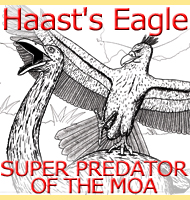 |
 |
 |
